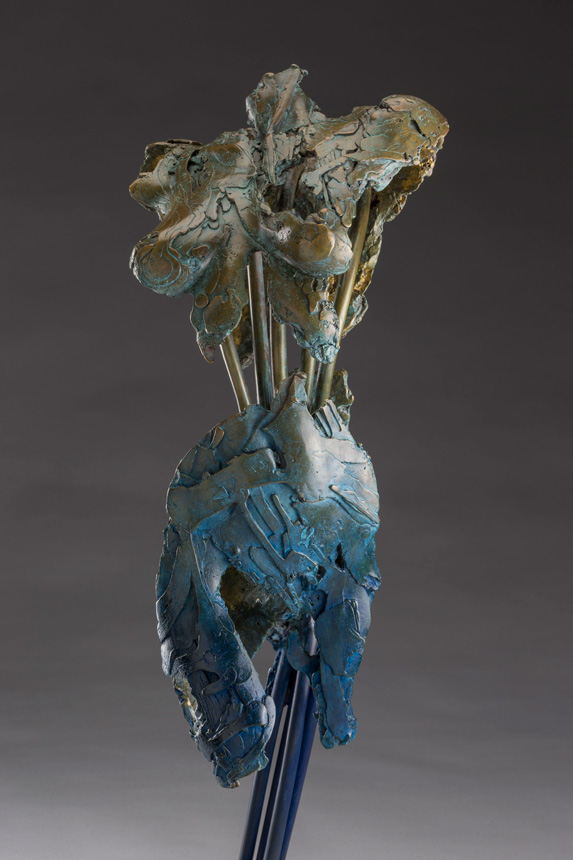We don’t see ourselves as others do.
At best we see a mirror image of ourselves
A ‘true mirror’ is when you have two mirrors at a right angle to each other.
Then you may see yourself not as you do but as others do.
When we look in a regular mirror we look at ourselves, for reassurance.
Things like am I pretty, or tidy or is my behind too big in these pants, but Caroline McHugh explains that when you look in a true mirror you’re not looking for reassurance but for revelation, you’re not looking ‘at’ yourself, but ‘for’ yourself.
She explains how disorienting this can be.
For instance, if we have a slight head tilt in one direction, in a ‘true mirror’ when we try to correct it, we correct it in the wrong direction. [1]
This is something that one discovers when sculpting a self-portrait.
You cannot sculpt what is directly in front of you but rather what you see in the mirror that reflects the image in the first mirror.
You must be careful not to model the right side of your face on the left side of your self-portrait!
McHugh’s ideas on social reformation revolve around the idea that this begins with the individual.
She helps people understand who they really are so they can be the best at being themselves.
This is where greatness comes from, not from being like any of the other great personalities on earth.
If you are considered eccentric, take that as a compliment!
It means that you don’t play the game as the others do.
It means that your ‘you-ness’ has the chance to flourish and shine.
While social adaptation is an important reality, being yourself is better.
It might be the hardest thing to do since we all seek the approval of others and if we diverge too far from the norm, there will certainly be a price to pay.
Still, how many brilliant people can you think of, and what do they have in common? Nothing!
The only thing they have in common is their vehement need to be themselves.
When social integration takes over we find that we need others to compare ourselves to.
Are we superior? Inferior?
McHugh speaks of ‘interiority’ instead.
This is a place where you have no competition, it’s just you, and you are enough because there is only one you!
How do you find you? Who are you?
This is McHugh’s recipe:
1-Perception-This is how others see you.
It’s a trap because we might mistake their beliefs and opinions as our own and this can be tremendously harmful in finding out who we really are.
2-Persona- This is what you want people to see you as.
This is an adaptive you.
It changes all the time and depends on your experiences so it is unique.
3- Ego- This is who you really are, for better or for worse, be it a state of self- congratulation or self-castigation.
The idea is to find a place in between the two.
A place where you can just be. Analogous to humility, this is a place where you can exist without the desperate need for the spotlight, a place where you are happy to make someone else the centre of your attention.
4- Self – Your life is your message to the world.
Otherwise why are you here?
You are you and that matters.
Written by Boky Hackel
1.http://www.karmatube.org/videos.php?id=5342
